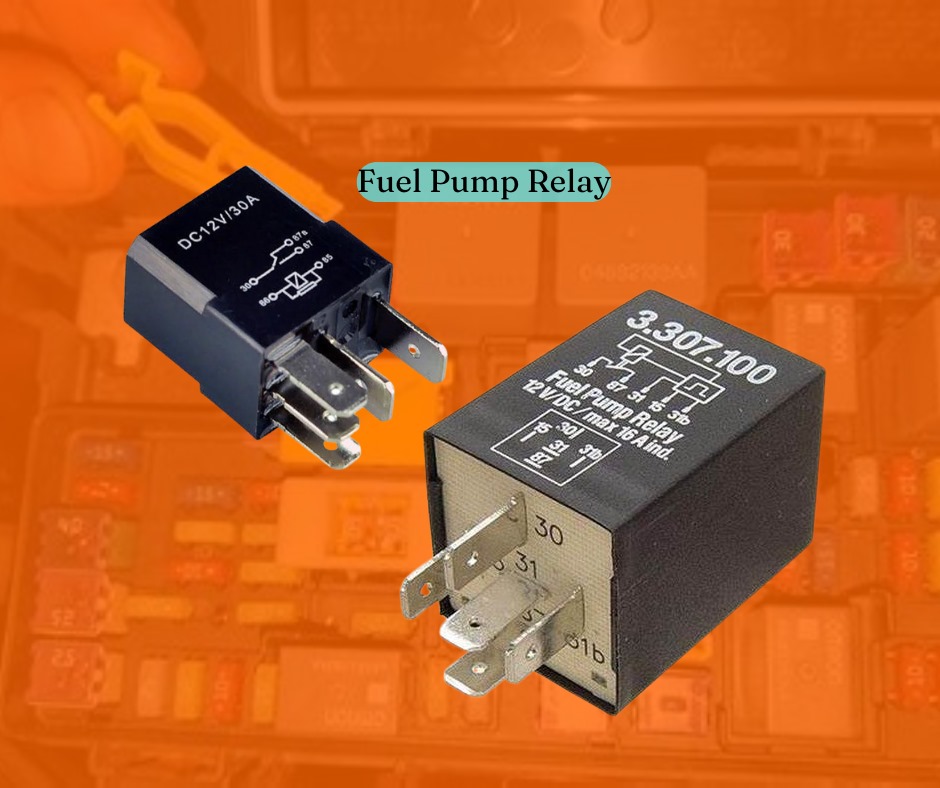How to Test a bad fueld pump relay

Testing a bad fuel pump relay involves a few straightforward steps:
Tools You'll Need:
• Multimeter or a test light
• Jumper wires (optional)
• Basic knowledge of the vehicle’s fuse box and relay locations
Steps to Test a Fuel Pump Relay:
1. Locate the Fuel Pump Relay:
- Check the vehicle’s manual for the location of the fuel pump relay. It’s typically found in the fuse box under the hood.
2. Check for Power:
- Turn the ignition key to the "ON" position (do not start the engine).
- Use a multimeter or test light to check if the relay’s socket has power. There should be voltage at the power input terminals.
3. Listen for a Click:
- When you turn the ignition to "ON," listen closely to the relay. A good relay will produce a clicking sound when it’s energized. If you don’t hear a click, the relay might be bad or not receiving the activation signal.
4. Test the Relay’s Coil:
- Remove the relay from the socket. Use the multimeter to test the resistance of the relay coil (between the two smaller terminals). The resistance should be within the manufacturer’s specifications (typically around 50-120 ohms). A reading of zero or infinite resistance indicates a bad relay.
5. Test the Relay’s Switch:
- Use the multimeter to test for continuity between the output terminals (the larger terminals). When the relay is not energized, there should be no continuity. If you apply power (using jumper wires) to the coil terminals, there should be continuity between the output terminals. If not, the relay is likely bad.
6. Swap Relays (Optional):
- If you're unsure, you can swap the fuel pump relay with another identical relay from your vehicle (such as the horn relay). If the fuel pump works after the swap, then the original relay is likely faulty.
7. Check the Fuel Pump:
Testing a bad fuel pump relay involves a few straightforward steps:
Tools You'll Need:
- Multimeter or a test light
- Jumper wires (optional)
- Basic knowledge of the vehicle’s fuse box and relay locations
Steps to Test a Fuel Pump Relay:
1. Locate the Fuel Pump Relay:
- Check the vehicle’s manual for the location of the fuel pump relay. It’s typically found in the fuse box under the hood.
2. Check for Power:
- Turn the ignition key to the "ON" position (do not start the engine).
- Use a multimeter or test light to check if the relay’s socket has power. There should be voltage at the power input terminals.
3. Listen for a Click:
- When you turn the ignition to "ON," listen closely to the relay. A good relay will produce a clicking sound when it’s energized. If you don’t hear a click, the relay might be bad or not receiving the activation signal.
4. Test the Relay’s Coil:
- Remove the relay from the socket. Use the multimeter to test the resistance of the relay coil (between the two smaller terminals). The resistance should be within the manufacturer’s specifications (typically around 50-120 ohms). A reading of zero or infinite resistance indicates a bad relay.
5. Test the Relay’s Switch:
- Use the multimeter to test for continuity between the output terminals (the larger terminals). When the relay is not energized, there should be no continuity. If you apply power (using jumper wires) to the coil terminals, there should be continuity between the output terminals. If not, the relay is likely bad.
6. Swap Relays (Optional):
- If you're unsure, you can swap the fuel pump relay with another identical relay from your vehicle (such as the horn relay). If the fuel pump works after the swap, then the original relay is likely faulty.
7. Check the Fuel Pump:
- If the relay is good, but the fuel pump still doesn’t run, the issue might be with the fuel pump itself, wiring, or other related components.
Safety Precautions:
- Ensure the vehicle is off when removing or swapping relays.
- Follow safety procedures when dealing with electrical components to avoid shocks or short circuits.
Testing the relay will help you determine if it's the source of your fuel pump issues or if the problem lies elsewhere.
- If the relay is good, but the fuel pump still doesn’t run, the issue might be with the fuel pump itself, wiring, or other related components.
Safety Precautions:
• Ensure the vehicle is off when removing or swapping relays.
• Follow safety procedures when dealing with electrical components to avoid shocks or short circuits.
Testing the relay will help you determine if it's the source of your fuel pump issues or if the problem lies elsewhere.

 Loading..
Loading..